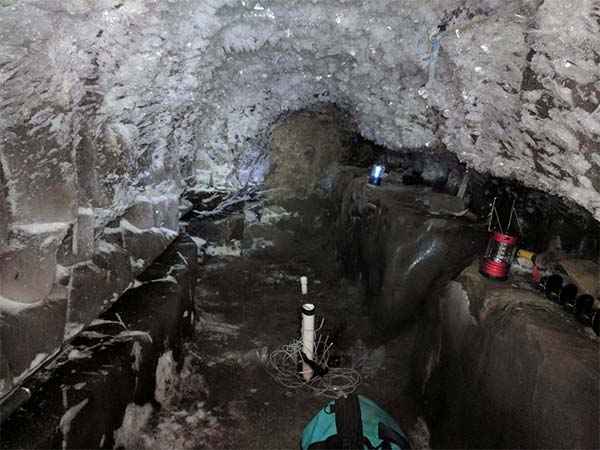In the 1960s, an organisation called CRREL (Cold Regions Research and Engineering Laboratory), that is part of the US Army, excavated a field site in Northern Alaska. The site was near the city of Utqiagvik, formerly known as Barrow. It is the northernmost city in the United States, and lies inside the Arctic Circle. The purpose of the excavation was to study wedges of freshwater ice beneath the Arctic permafrost. In the 2000s, the researchers collected subsurface brine that was trapped beneath the ice wedges. This water was in a liquid state, because of the sheer amount of salt dissolved in it. Jody Deming, professor of oceanography at UW who studies microbial Arctic life explains, “The extreme conditions here are not just the below-zero temperatures, but also the very high salt concentrations. One hundred and forty parts per thousand — 14% — is a lot of salt. In canned goods that would stop microbes from doing anything. So there can be a preconceived notion that very high salt should not enable active life.” Despite the extreme salinity, the water was found to be teeming with living microbes, even though they had been isolated from the rest of the world for tens of thousands of years. Samples collected in 2017 and 2018 showed thriving colonies of both bacteria and viruses. The most common bacteria found is known as Marinobacter. The bacteria, trapped in the saline deposit before being isolated, was a form of marine bacteria, as can be deduced from the name itself. The discovery surprised scientists studying the brine deposits. Zachary Cooper, a doctoral student said, “We were quite startled at how dense the bacterial communities are.” The trapped brine deposits are known as “cryopegs”. Researchers from the University of Washington have been studying the microbial life that is found in these cryopegs. Recently, the researchers presented DNA sequences of the life forms found in these cryopegs. While similar to other microbes found in marine environments, there were signs that the bacteria had evolved in isolation for over 50,000 years. Researchers do not fully understand the process that led to the formation of the cryopegs. One theory is that the layers were from receding oceans during the last ice age. Snow fell over the remaining water, and then turned into permafrost. The trapped water remained in a liquid state because of the high salinity.

The tunnel beneath the permafrost. The sterlised pipes are used to access the brine deposits. Image: Zac Cooper/University of Washington
There are three high profile missions to the icy moons of the gas giants lined up over the next decade. These include the JUpiter ICy moons Explorer (JUICE) mission by ESA to explore Europa, Ganymede and Callisto. Then there is the Europa Clipper mission by NASA which will also have a lander component. All these missions will be equipped with payloads that are meant for identifying biosignatures, or signs of life. The Dragonfly mission to the Saturnian moon of Titan will have the express purpose of studying how far prebiotic chemistry has advanced on the surface. These are the confirmed missions. Apart from these, there are other concepts in the planning and conceptualisation stage, including a submarine probe to explore the global subsurface ocean on Europa, probes to study Enceladus and Titan over a series of flybys, and balloons to explore the thick atmosphere on Titan. Among all these icy moons, perhaps the most interesting is Titan, as it can actually be hospitable to two forms of life, one as we know it on Earth, and a theoretical kind that we have not yet seen before. The hydrocarbon seas on the surface can serve the same function as liquid water on Earth, acting as a solvent for life forms. These forms of life could breathe in hydrogen, breathe out methane, and depend on acetylene and ethane as an energy source. If this exotic form of life exists on Titan at all, it is likely to be widespread across the surface. Beneath the surface, a more familiar form of life could exist in the subsurface oceans. In fact, all across the galaxy, ice worlds may be the norm for finding life as against rocky planets in orbit around the habitable zone of their host stars. This is because the sheer number of ice moons are expected to exceed rocky exoplanets where liquid water can exist on the surface. The estimates for how many more vary, but there are expected to be between 100 to 1000 times more ice worlds than rocky exoplanets in the Milky Way. Given the right conditions, if these worlds have surface or subsurface oceans, they can be more common habitats for life than planets geologically similar to the Earth. The finding of thriving microbial colonies in the deep brine deposits, buried beneath the Arctic permafrost and isolated from the rest of the Earth, provides a glimpse into the forms of life that could potentially exist on the icy moons in the Solar System. The studies on Earth can prepare scientists about what to look for, and what to expect, during future explorations of ice worlds.
Source: University of Washington
from Latest Technology News https://ift.tt/2JPFZJD

No comments:
Post a Comment